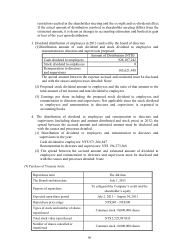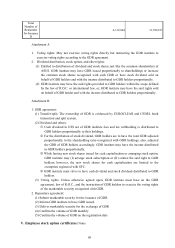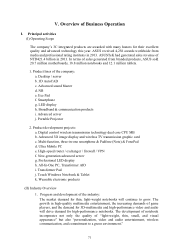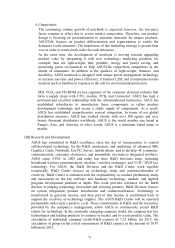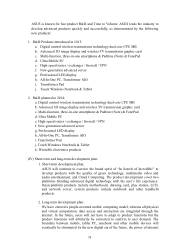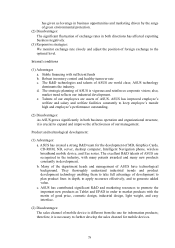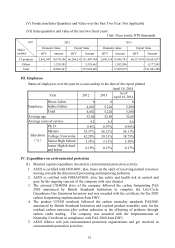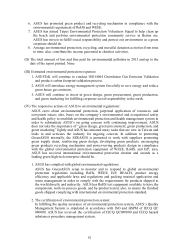Asus 2013 Annual Report Download - page 77
Download and view the complete annual report
Please find page 77 of the 2013 Asus annual report below. You can navigate through the pages in the report by either clicking on the pages listed below, or by using the keyword search tool below to find specific information within the annual report.73
4. Competition:
The continuing volume growth of notebook is expected; however, the low-price
factor remains in effect due to severe market competition. Therefore, our product
design is focusing on personalization to stimulate demands for unique products.
ASUSTeK focuses on product differentiation and segmentation to satisfy the
demand of each consumer. The importance of this marketing strategy is greater than
ever in order to create profit niche for each enterprise.
At the same time, the development of notebook is moving towards upgrading
product value by integrating it with new technology; marketing products, for
example, that are light-weight, thin, portable, energy and power saving, and
promoting green environment to help ASUSTeK outperform competitors in the
minds of consumers. In addition to the qualities of light-weight, thinness, and
durability, ASUS notebook is designed with unique power management technology
to increase use time and power efficiency; it features LED, and incorporates natural
material such as bamboo in response to the call for environmental protection.
MB, VGA, and CD-ROM are key segments of the computer elements industry that
form a supply chain with CPU, module, PCB, and Connector. ASUS has kept a
profound and excellent relationship with the aforementioned businesses. ASUS has
established subsidiaries to manufacture these components to refine product
development technology and secure a stable supply of components. As a result,
ASUS has established comprehensive vertical integration. In terms of our global
distribution structure, ASUS has worked closely with over 300 agents and over
twenty thousand distributors worldwide. ASUS is the world number one brand in
Europe, Asia, and America; in other words, ASUS is a dominant brand name in
market.
(III) Research and Development
ASUS has committed to R&D excellence since the day of incorporation to control
self-developed technology for the R&D, production, and marketing of advanced MB,
Graphics Cards, Notebook, Eee PC, Server, mobile phone and to develop 4C (computer,
communication, consumer electronics, and automobile electronics) integrated products.
ASUS setup ATEC in 2003 and today has three R&D divisions setup, including
broadband wireless communication, wireline / wireless exchanger, and VCD / DVD key
technology. For ASUS, the R&D Division and the R&D Center work together
reciprocally. R&D Center focuses on technology study and commercialization of
creativity. R&D Center is entrusted with the responsibility to conduct preliminary study
and assessment on the key software and hardware technology, module, and applied
program development platform in depth. This work provides reference for the R&D
director in judging technology movement and selecting partners. R&D Division focuses
on system integration, product introduction and commercialization. Technology is
transformed to generate income, and then part of that income is contributed back to
support the creativity or technology supplier. The ASUS R&D Center will be operated
permanently under such a positive cycle. These commitments to R&D, and the incentives
provided by the company’s management, allow ASUS to continuously recruit R&D
talents for technology. In the constantly changing computer world, the company has key
technologies and leading products to compete in market and to create product value. The
calculation of individual company yields R&D expense of 7.25 billion for 2013; the
calculation of group yields a total commitment of R&D expense in the amount of 10.97
billion for 2013.





